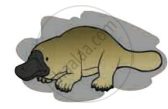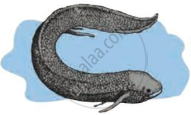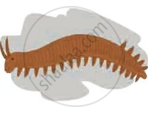Advertisements
Advertisements
प्रश्न
The degenerated and non-functional organs found in an organism are called ______.
उत्तर
The degenerated and non-functional organs found in an organism are called Vestigial organ.
APPEARS IN
संबंधित प्रश्न
Which of the following is a correct set of homologous organs?
(a) Forelimbs of frog, bird and lizard
(b) Spine of cactus and thorn of bougainvillea
(c) Wings of bat and wings of butterfly
(d) Wings of a bird and wings of a bat
There are five animals A, B, C, D and E. The animal A uses its modified forelimbs for flying. The animal B uses its forelimbs for running whereas the animal C uses its forelimbs for grasping. The animal D can live on land as well as in water and uses its forelimbs to prop up the front end of its body when at rest. The animal E which respires by using spiracles and tracheae uses wings for flying but its wings are analogous to the modified forelimbs of animal A.
(a) What could the animals A, B, C, D and E be?
(b) Why are the forelimbs of animals A, B, C, D called homologous organs?
(c) What does the existence of homologous organs in animals A, B, C and D tell us about their ancestors ?
(d) Why are the modified forelimbs of animal A and the wings of animal E called analogous organs?
(e) State whether animals A and E have a common ancestor or not.
Identify the following pairs as homologous and analogous organs:
(i) Sweet potato and potato
(ii) Eye of octopus and eye of mammals
(iii) Thorns of Bougainvillaea and tendrils of Cucurbits
(iv) Fore limbs of bat and whale
Complete the flowchart.

Which evidence of evolution is shown in the given picture? Explain the importance of this evidence.

Write the answers to the questions by observing the figure below.
 |
 |
 |
| (a) | (b) | (c) |
- Write the name of the animal ‘(a)’ in the figure.
- Write the name of the animal ‘(b)’ in the figure.
- Write the name of the animal ‘(c)’ in the figure.
- Which evolutionary evidence is illustrated by this figure?
- Write the definition of that evidence for evolution.
Palaeontological evidence for evolution refers to the ______.
The study of fossil evidence of evolution is called ______
Evolutionary convergence is the development of a ______.
Pick the odd man out:
